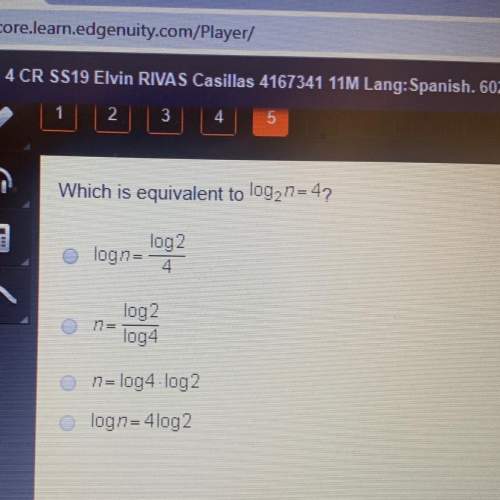
Mathematics, 11.01.2021 06:10 tantoine2704
Given tan A =6/5 and that angle A is in Quadrant I, find the exact value of cos A in simplest radical form using a rational denominator.

Answers: 1


Another question on Mathematics

Mathematics, 21.06.2019 16:10
To find the extreme values of a function f(x.y) on a curve x-x(t), y y(t), treat f as a function of the single variable t and use the chain rule to find where df/dt is zero. in any other single-variable case, the extreme values of f are then found among the values at the critical points (points where df/dt is zero or fails to exist), and endpoints of the parameter domain. find the absolute maximum and minimum values of the following function on the given curves. use the parametric equations x=2cos t, y 2 sin t functions: curves: i) the semicircle x4,y20 i) the quarter circle x2+y-4, x20, y20 b, g(x,y)=xy
Answers: 2

Mathematics, 21.06.2019 17:30
Daniel bought a computer game for $25 and later sold it to thomas for a 40% profit. how much did daniel sell the computer game for?
Answers: 1

Mathematics, 21.06.2019 18:50
Astudent draws two parabolas on graph paper. both parabolas cross the x-axis at (-4, 0) and (6,0). the y-intercept of thefirst parabola is (0, –12). the y-intercept of the second parabola is (0-24). what is the positive difference between the avalues for the two functions that describe the parabolas? write your answer as a decimal rounded to the nearest tenth.
Answers: 2

You know the right answer?
Given tan A =6/5 and that angle A is in Quadrant I, find the exact value of cos A in
simplest radic...
Questions


Computers and Technology, 03.03.2020 00:26

Computers and Technology, 03.03.2020 00:26



History, 03.03.2020 00:27



Mathematics, 03.03.2020 00:27










Mathematics, 03.03.2020 00:27





